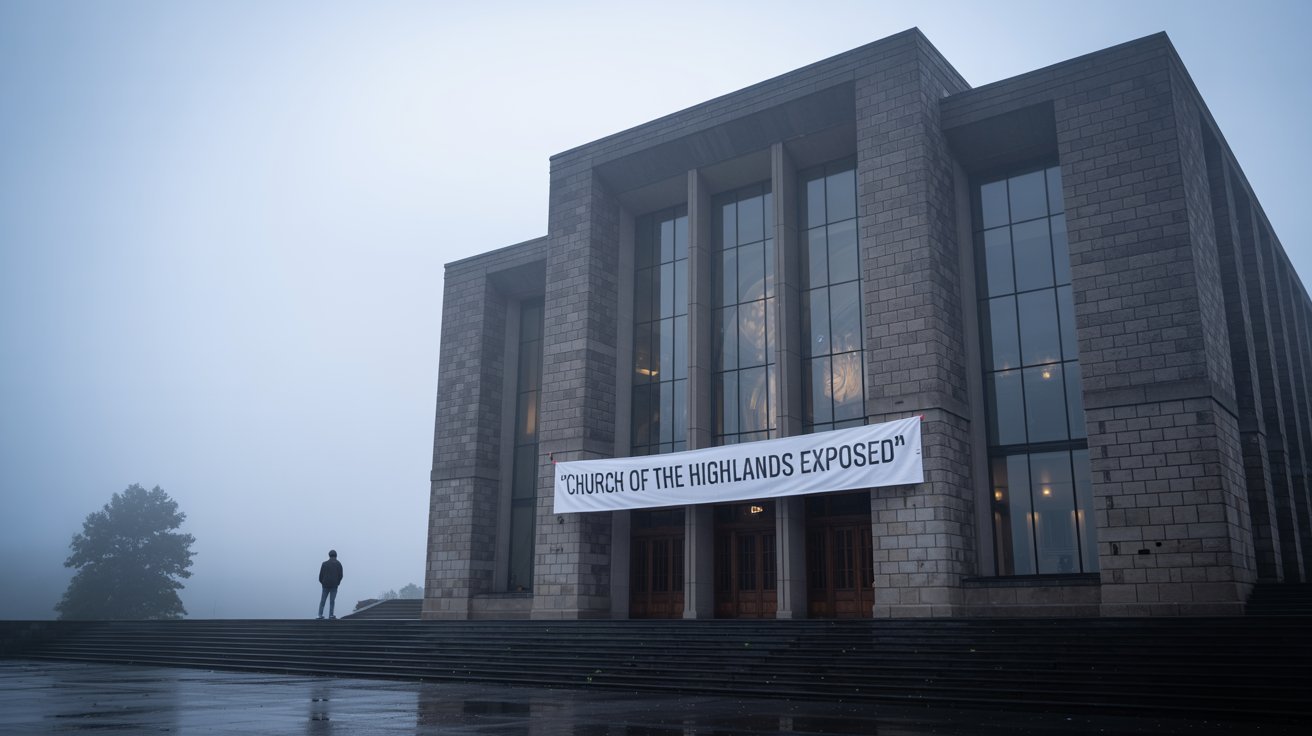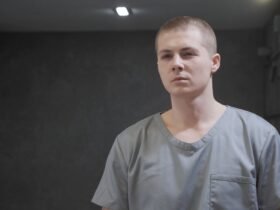Introduction
The phrase “Church of the Highlands exposed” has become a recurring search term in recent years, reflecting the curiosity and concern surrounding one of America’s largest megachurches. With tens of thousands of weekly attendees across multiple campuses, the Church of the Highlands (COTH), based in Birmingham, Alabama, has long been praised for its growth and community programs. Yet alongside this success, it has also faced controversy, criticism, and heightened scrutiny. From leadership decisions and social media backlash to questions about finances, pastoral retreats, and its role in the Association of Related Churches (ARC), the church has often found itself in the spotlight for reasons beyond its sermons. This article provides an in-depth and balanced exploration of the controversies, the facts, and the ongoing developments that shape the narrative of “church of the highlands exposed.”
Why “Church of the Highlands Exposed” Became a Buzzphrase
When people search for “church of the highlands exposed”, they are often looking for clarity on rumors, criticisms, or public scandals tied to the church. For some, it relates to the 2020 backlash that saw Birmingham schools cut ties with the church after founder Pastor Chris Hodges “liked” certain social media posts. For others, the focus is on the church’s relationship with ARC, or the construction of “The Lodge,” a pastoral retreat project that critics argue could serve as a restoration pipeline for disgraced leaders. Questions about Highlands College accreditation and finances further fuel the narrative. In short, the phrase is shorthand for multiple controversies rather than a single issue.
Timeline of Key Events
Understanding why “church of the highlands exposed” trends requires a timeline of its major flashpoints:
- 2020: Backlash over Hodges’ social media activity led to public partnerships being severed.
- 2022: “The Lodge” retreat center sparked debate about pastoral restoration and transparency.
- 2023: Highlands College achieved initial accreditation through ABHE, raising both praise and criticism.
- 2024: Watchdog groups intensified their critiques of ARC connections and Highlands projects.
- 2025: Chris Hodges stepped down as lead pastor, transitioning into the role of Highlands College chancellor, as media coverage highlighted related lawsuits in the broader ARC network.
This sequence of events shows that controversies have not been isolated but recurring, shaping how outsiders perceive the church.
The 2020 Birmingham Backlash
The most public controversy tied to “church of the highlands exposed” occurred in 2020, when screenshots revealed that Pastor Chris Hodges had liked several posts on social media that some interpreted as racially insensitive. The response was swift: Birmingham City Schools and the Housing Authority cut ties with the church, ending lease agreements for facilities used by its congregants. This was a significant blow, as Church of the Highlands had been deeply embedded in local outreach and school partnerships. Hodges apologized, but for critics, the incident confirmed concerns about the church’s cultural sensitivity and leadership accountability. For supporters, however, it became an example of how one misstep can overshadow years of community work.
ARC Connections and Oversight Concerns
Church of the Highlands is not just a megachurch; it is also a founding member of the Association of Related Churches (ARC), a large church-planting network. ARC has faced its own share of scandals, with multiple member churches embroiled in moral and financial failures. Because of COTH’s leadership role within ARC, critics argue that accountability and oversight are weak, raising red flags. Watchdog groups in 2024 released open letters highlighting the risks of this system, suggesting that ARC and its flagship churches may be too quick to protect leaders at the expense of congregations. While not all issues within ARC are directly tied to COTH, its prominence ensures that any ARC scandal reflects back on Birmingham’s largest church.
The Lodge Pastoral Retreat: Purpose vs. Perception
Another hot topic in the “church of the highlands exposed” narrative is The Lodge, a pastoral retreat center announced in 2022. The church framed it as a place for leaders to rest, recover, and find renewal. However, critics claimed it could function as a “restoration pipeline” for disgraced pastors, allowing fallen leaders to quietly re-enter ministry without meaningful accountability. MinistryWatch and other outlets questioned both the purpose and transparency of the project. Church leaders defended the plan, emphasizing its value for healthy pastoral rhythms, but the lack of detailed explanations left critics unsatisfied. As with many megachurch initiatives, perception became as powerful as reality.
Highlands College: Accreditation and Questions
Highlands College, the ministry training arm of COTH, also features prominently in discussions about “church of the highlands exposed.” In 2023, the college achieved initial accreditation through the Association for Biblical Higher Education (ABHE). Supporters hailed this as a milestone that legitimized the program. However, some critics pointed out that ABHE accreditation is narrower than that of regional accrediting bodies, limiting credit transferability and broader recognition. Questions about tuition costs, career outcomes, and the true value of the degree continue to surface online. Nonetheless, Highlands College remains a central pipeline for training the next generation of COTH leaders, ensuring it will stay at the center of both admiration and debate.
Leadership Transition in 2025
A new chapter opened in 2025 when Chris Hodges stepped down as lead pastor of Church of the Highlands. Hodges, who had led the church since its founding, transitioned into the role of Highlands College chancellor. Reports at the time also linked him to lawsuits within the wider ARC orbit, though not necessarily against the church directly. This leadership change was both symbolic and practical, signaling generational succession while also reflecting the pressures of ongoing scrutiny. For some, the move raised confidence in the church’s adaptability. For others, it felt like a tactical repositioning amid controversy.
Money, Governance, and Transparency
No discussion of “church of the highlands exposed” is complete without mentioning finances. Like many megachurches, COTH operates on multimillion-dollar annual budgets, funded largely by tithes and offerings. Critics often ask how funds are allocated, raising questions about land deals, building projects, and pastoral compensation. Supporters counter that the church invests heavily in community outreach, missions, and training. The challenge is that financial disclosures are often limited compared to nonprofit organizations in other sectors. This lack of transparency feeds suspicion, even when no wrongdoing is proven.
Community Impact and Local Partnerships
Despite the controversies, Church of the Highlands continues to exert a massive influence on Birmingham and beyond. Its Dream Centers, small groups, and service projects have touched thousands of lives. Yet its partnerships with public institutions have been complicated by past controversies, especially the 2020 backlash. For local communities, the church remains both a source of hope and a subject of debate, illustrating how large religious organizations can simultaneously uplift and divide.
Media Coverage vs. Member Experiences
When outsiders read “church of the highlands exposed,” they often encounter watchdog blogs and investigative journalism highlighting failures. However, inside the church, many members report life-changing experiences, vibrant worship, and authentic community. This tension between external critique and internal loyalty is common in large religious organizations. It raises a critical question: how do we reconcile individual stories of transformation with systemic concerns about governance and accountability?
What’s Verified vs. What’s Alleged
Part of the difficulty in addressing “church of the highlands exposed” is separating fact from speculation. Some criticisms are well-documented, such as the 2020 backlash and Highlands College’s ABHE accreditation. Others remain allegations, rumors, or disputed interpretations, such as the ultimate role of The Lodge or the scope of ARC’s accountability failures. The church itself often issues limited responses, preferring to focus on ministry rather than public rebuttals. For readers, the best approach is to verify claims through primary sources while acknowledging that perception and trust matter as much as technical accuracy.
Conclusion
The story of “church of the highlands exposed” is not a simple tale of scandal or success. It is a complex, evolving narrative that reflects the challenges of leading a megachurch in the digital age. From social media controversies and retreat centers to accreditation and leadership changes, COTH has faced criticism at nearly every turn. Yet it also continues to grow, serve, and shape the faith of thousands. For those seeking the truth, the key lies in distinguishing documented facts from rumors, and recognizing both the real concerns and the undeniable impact of this influential church. The conversation is far from over, and as new developments unfold, “church of the highlands exposed” will remain a phrase that captures both curiosity and controversy.
Do Read: Who Is Dylan Schumaker? Facts, Court Rulings, and Public Reaction




